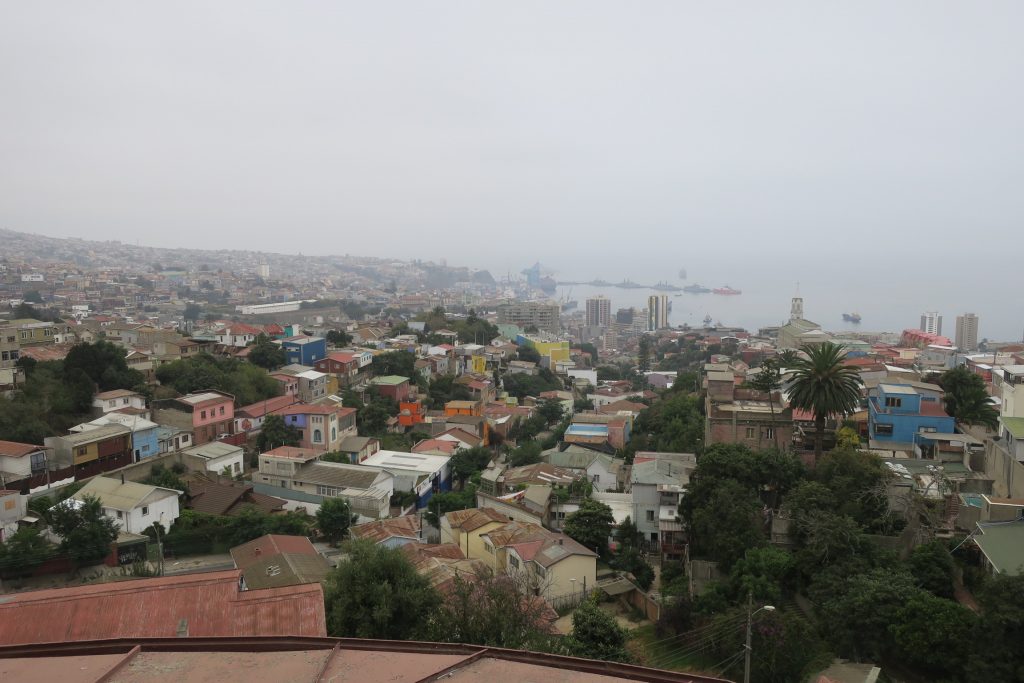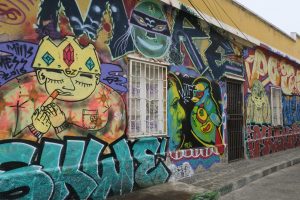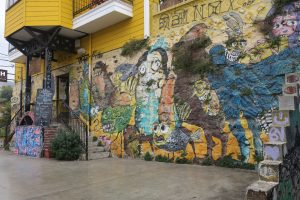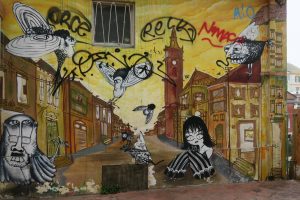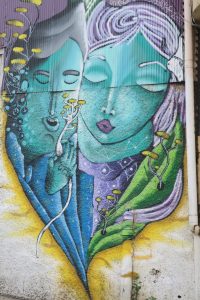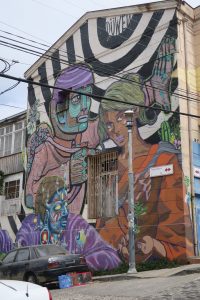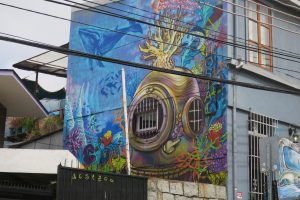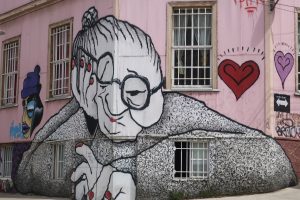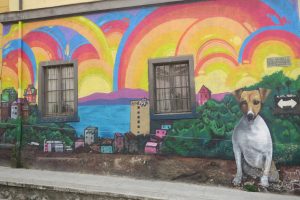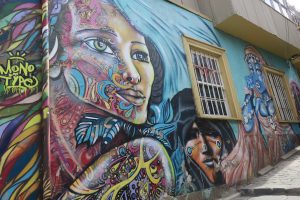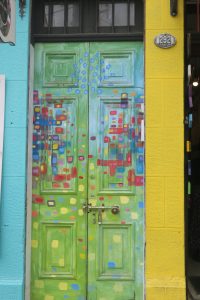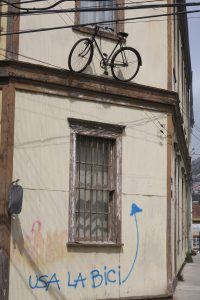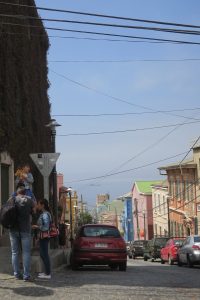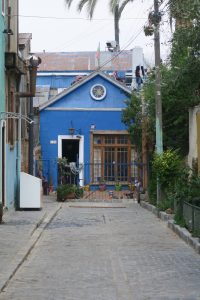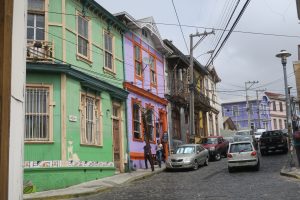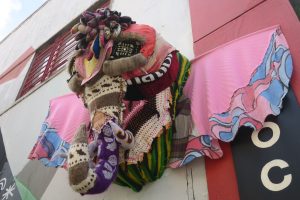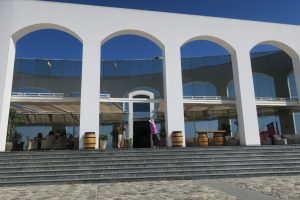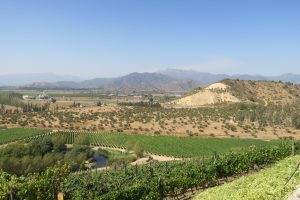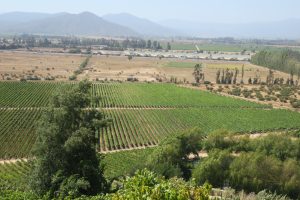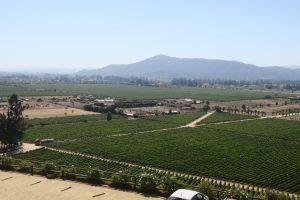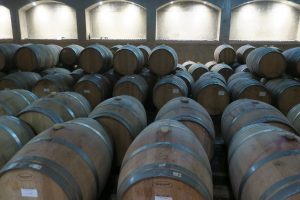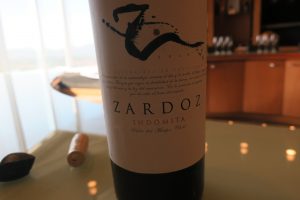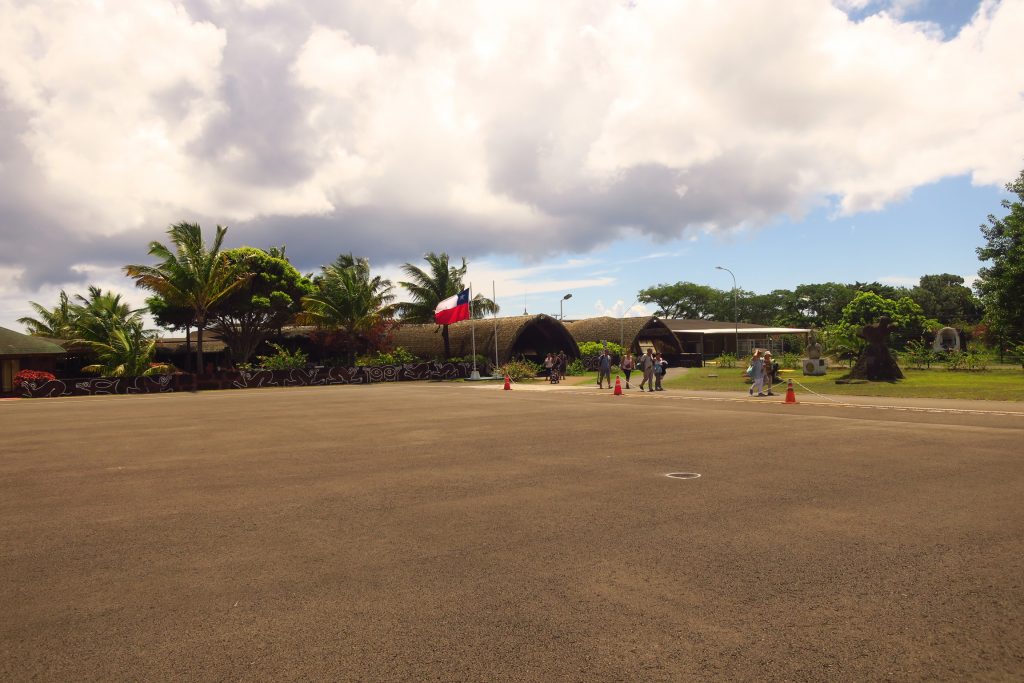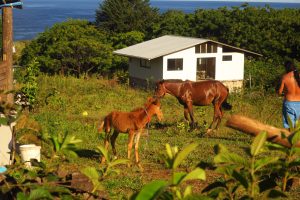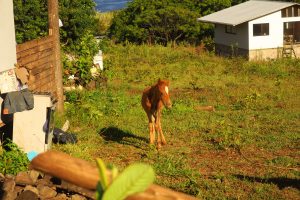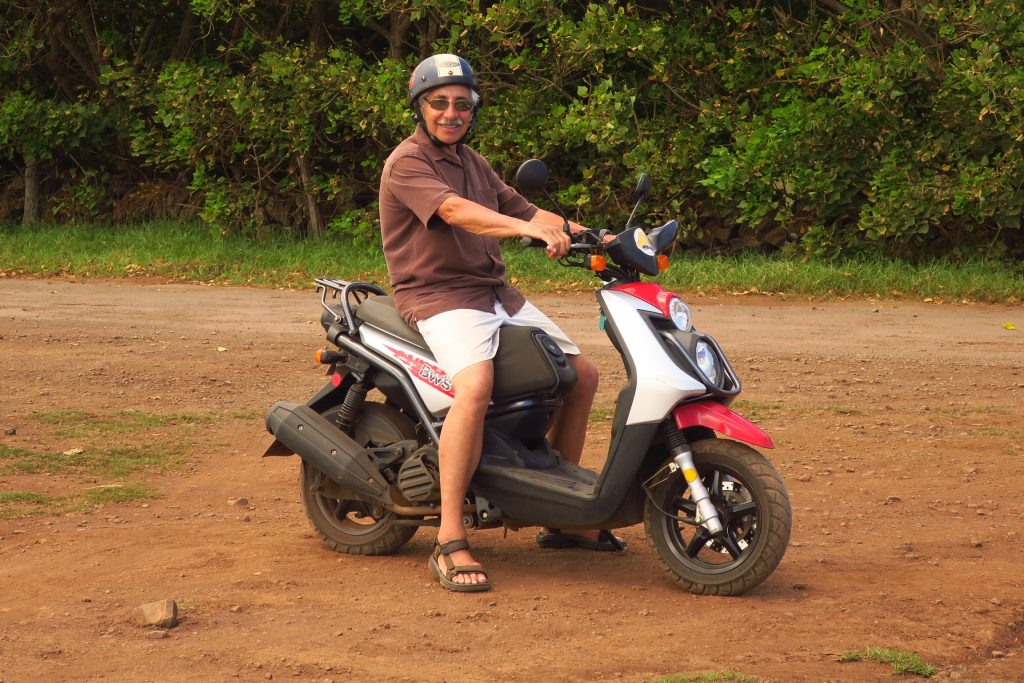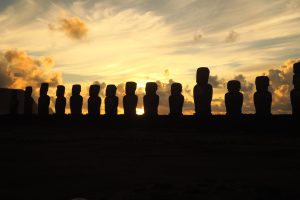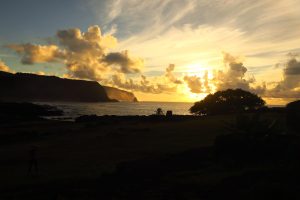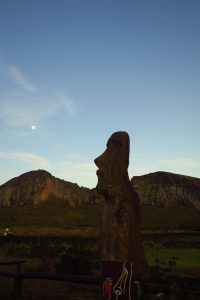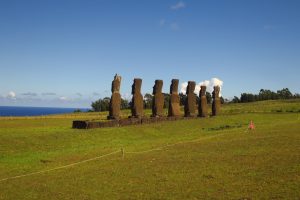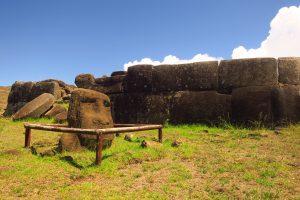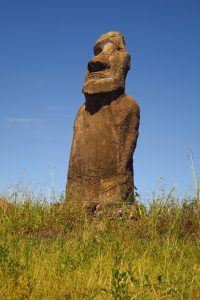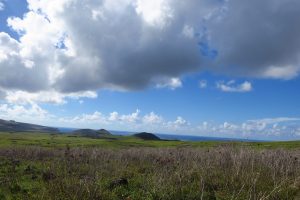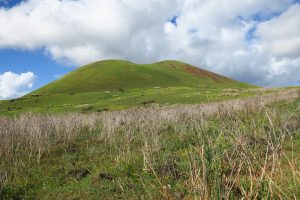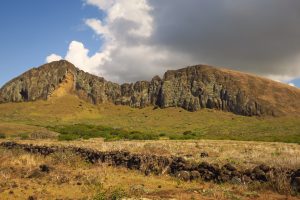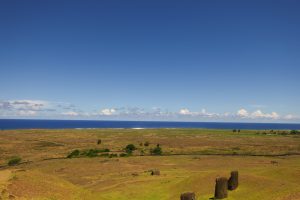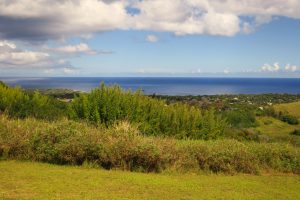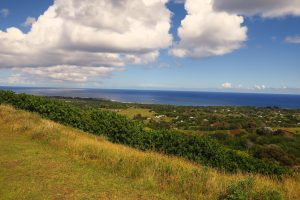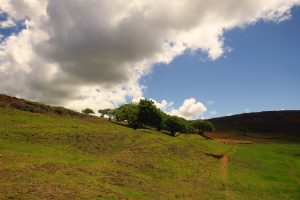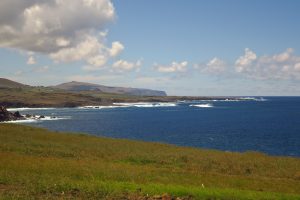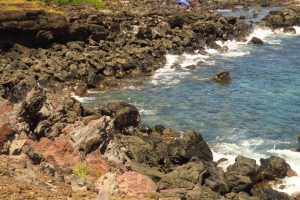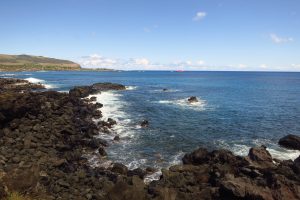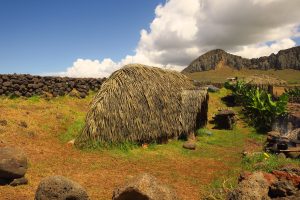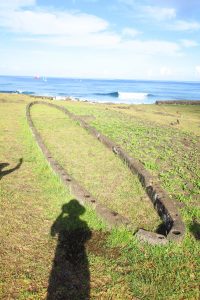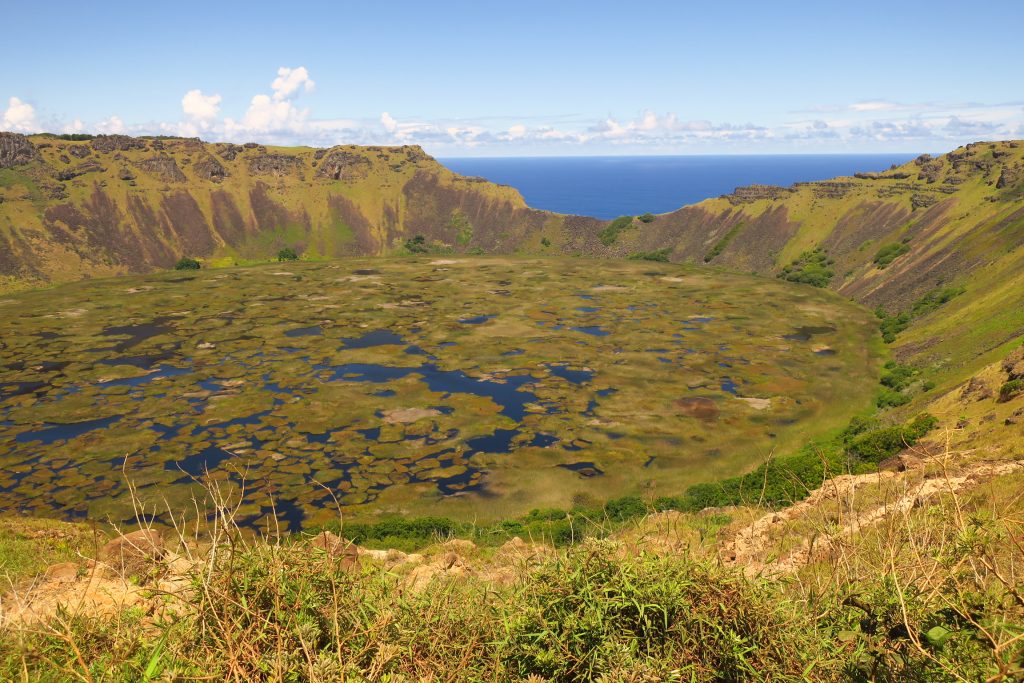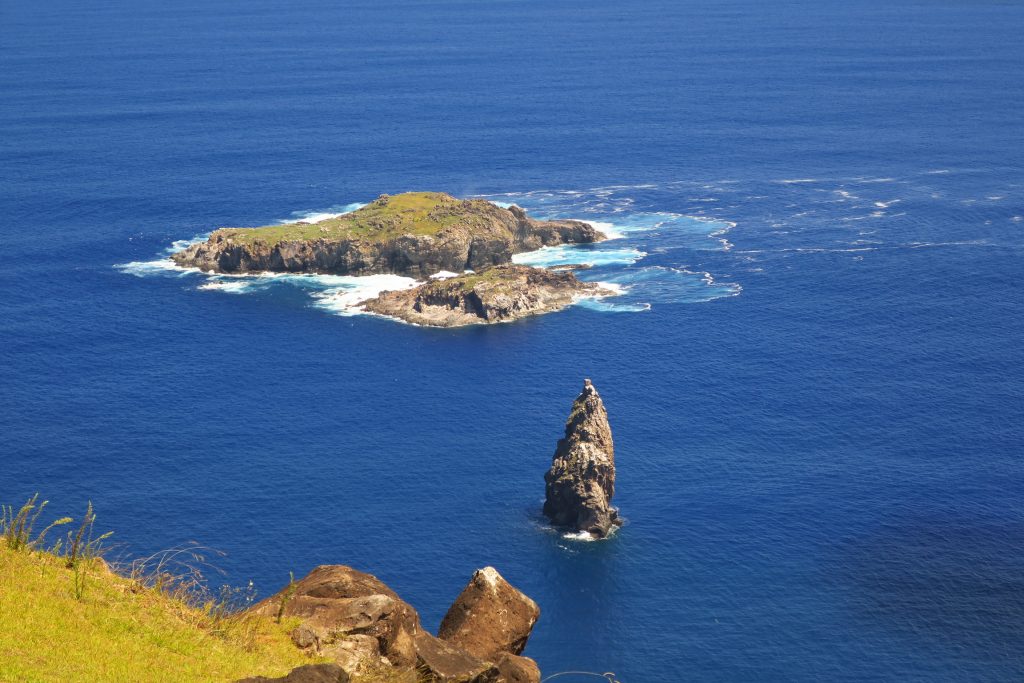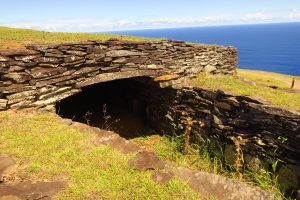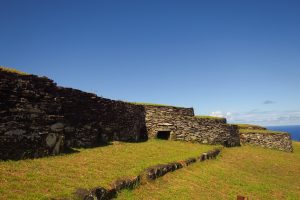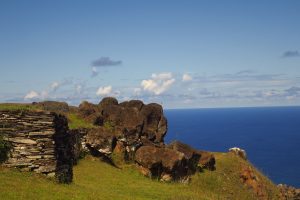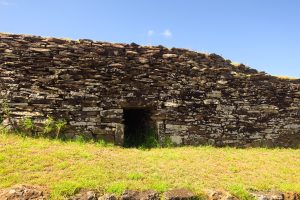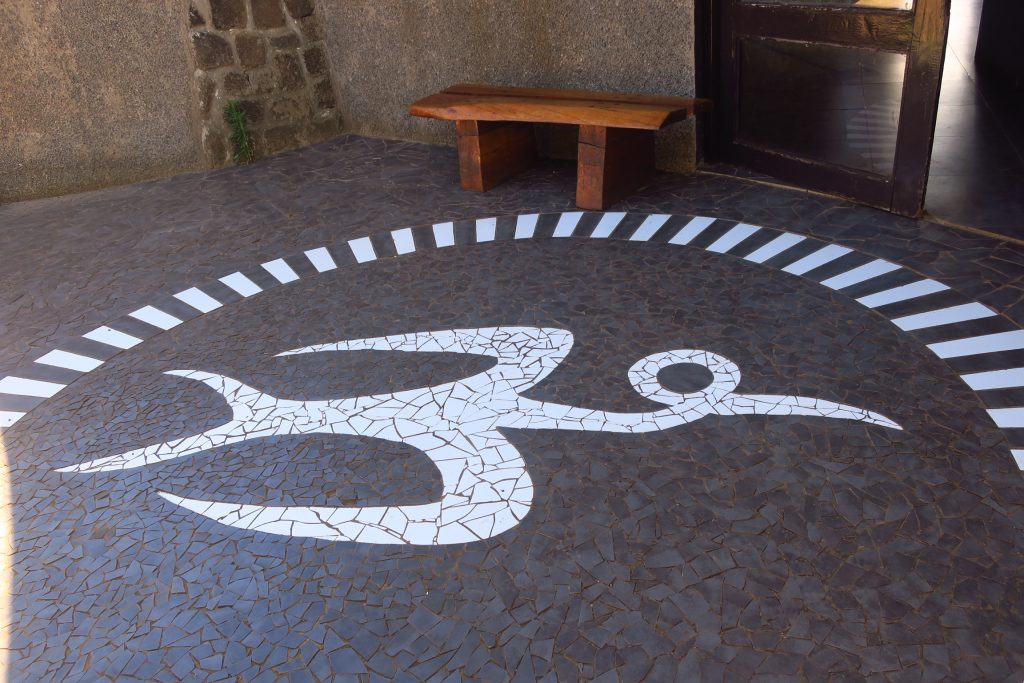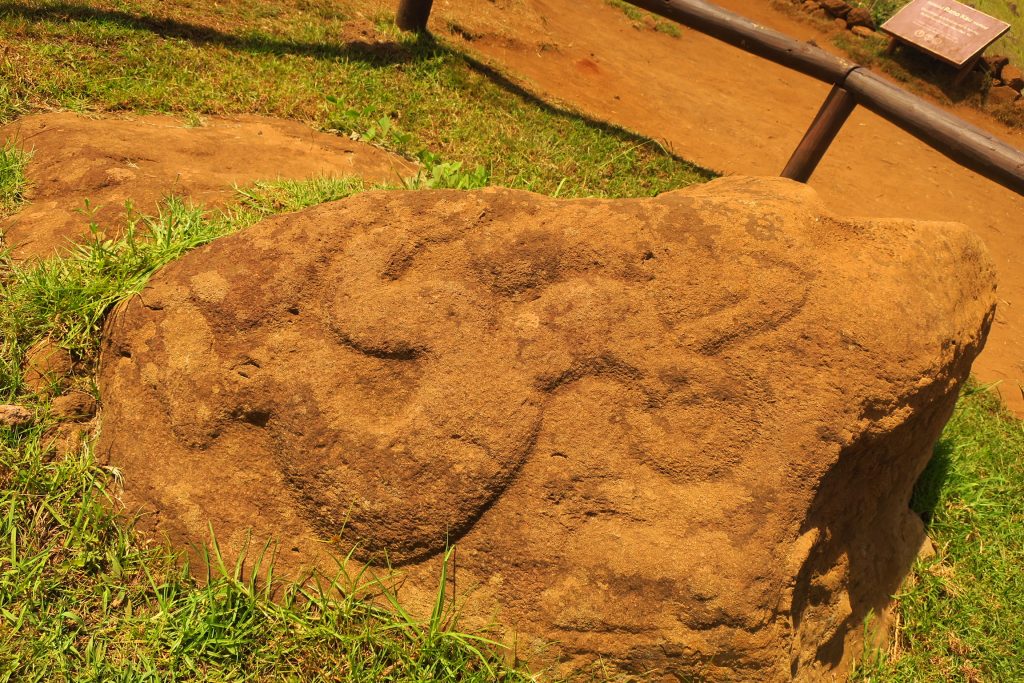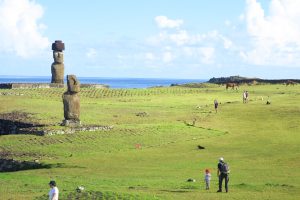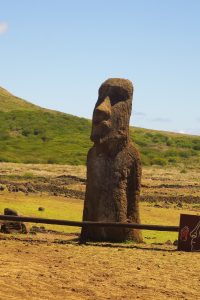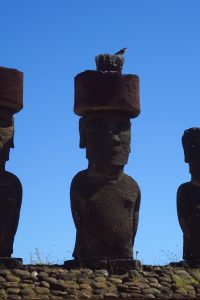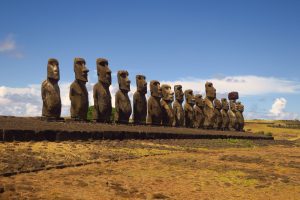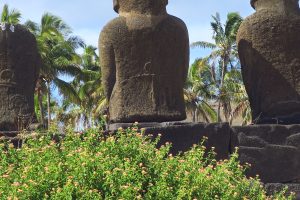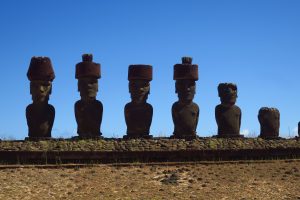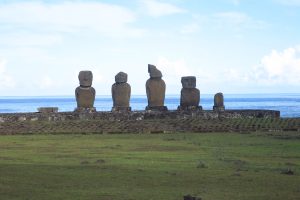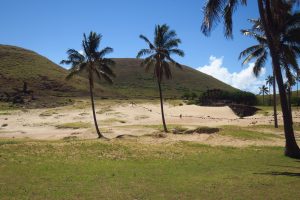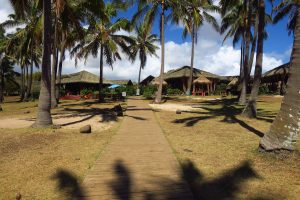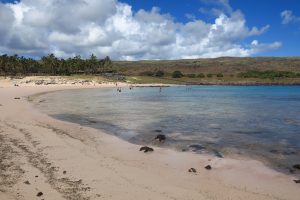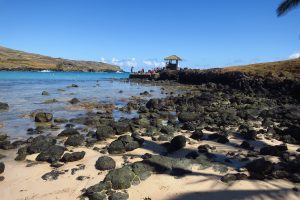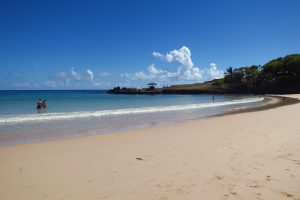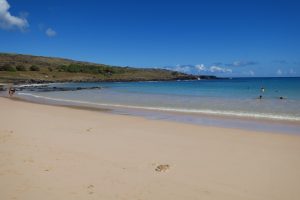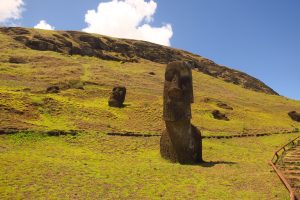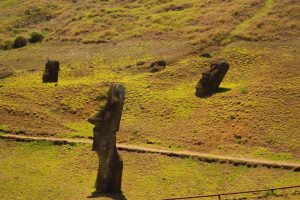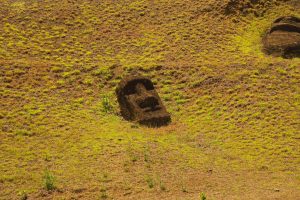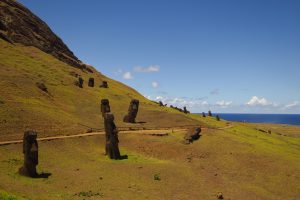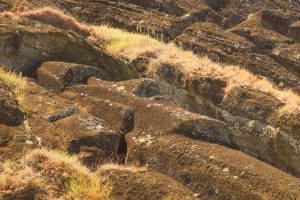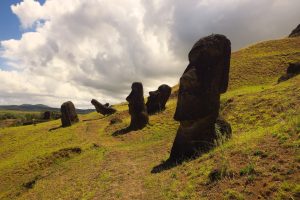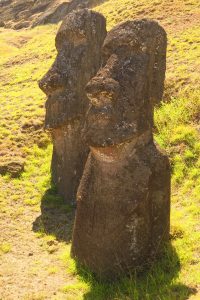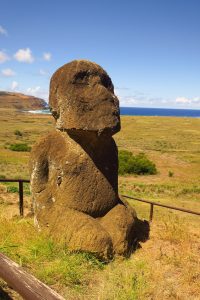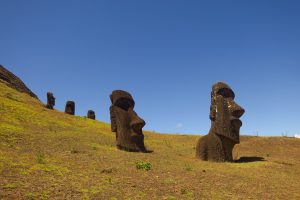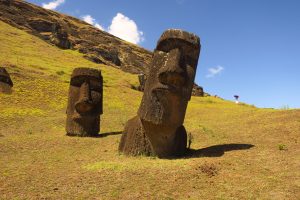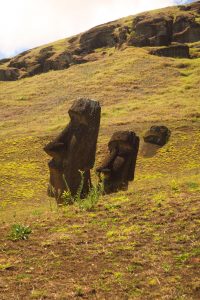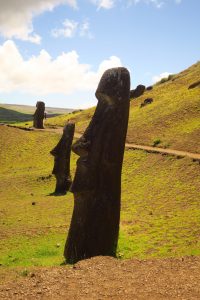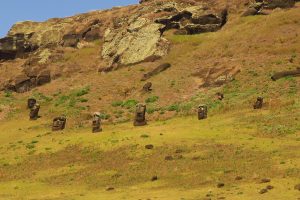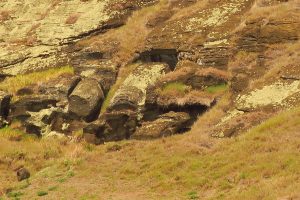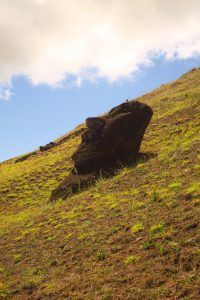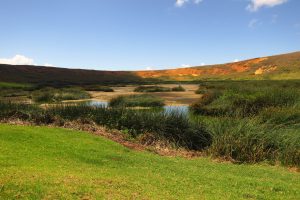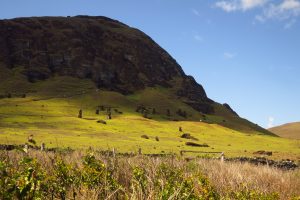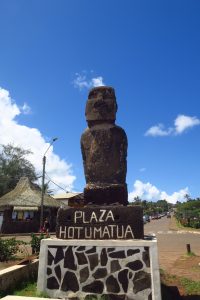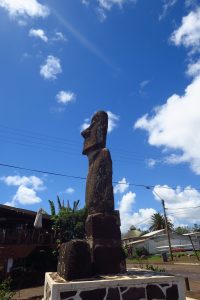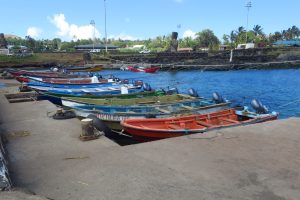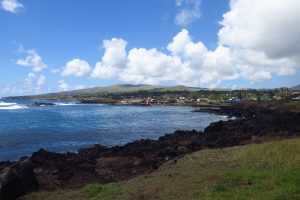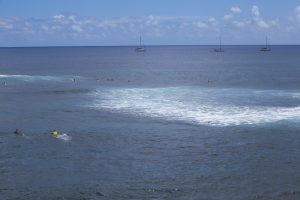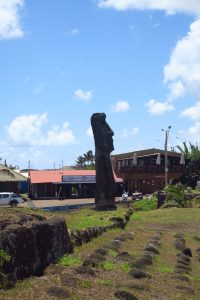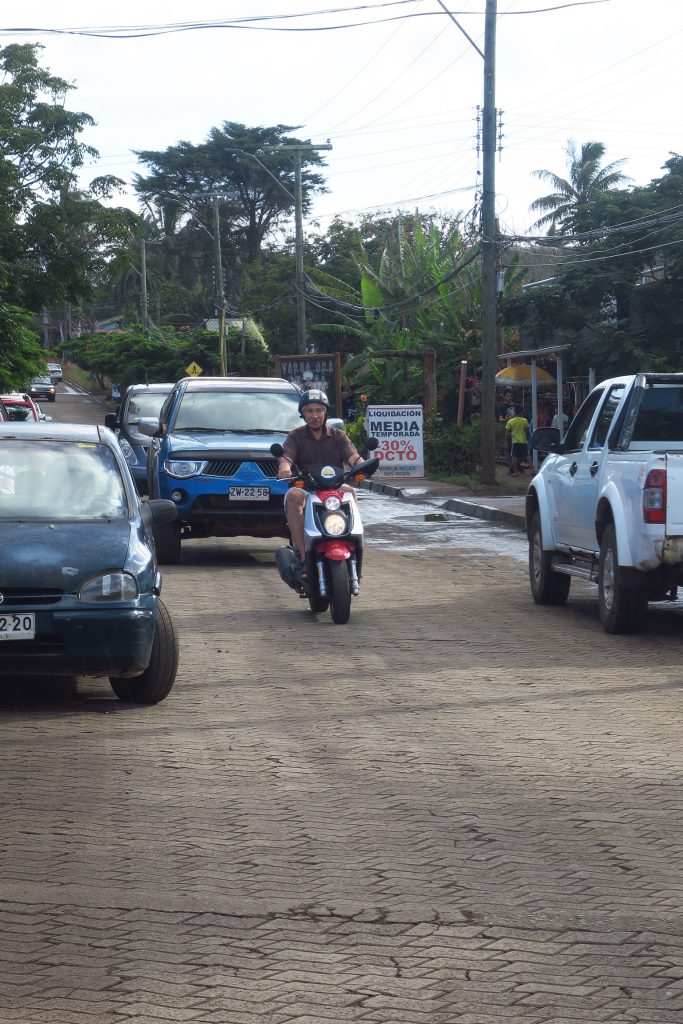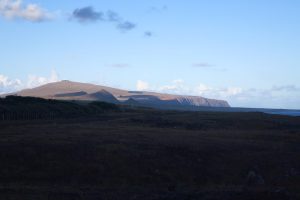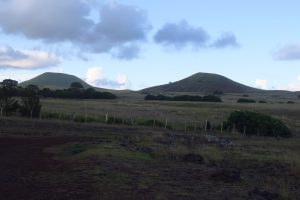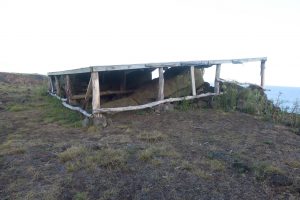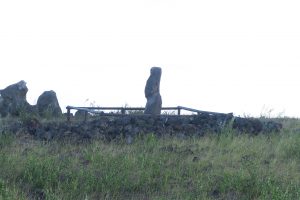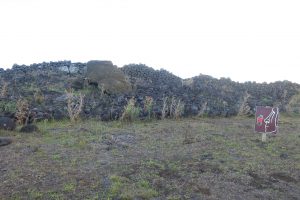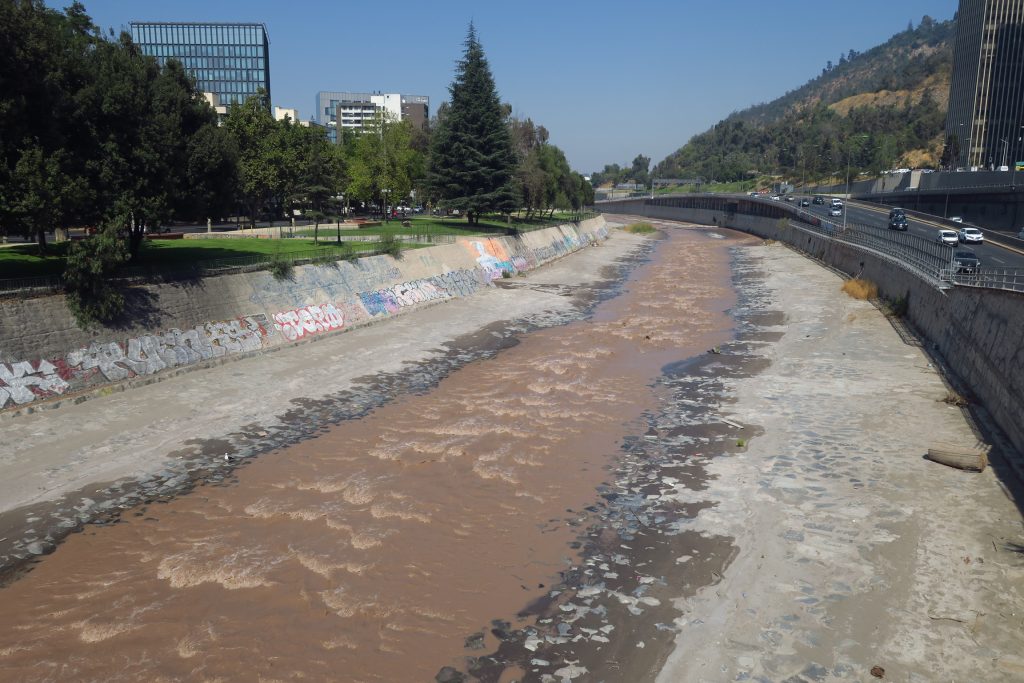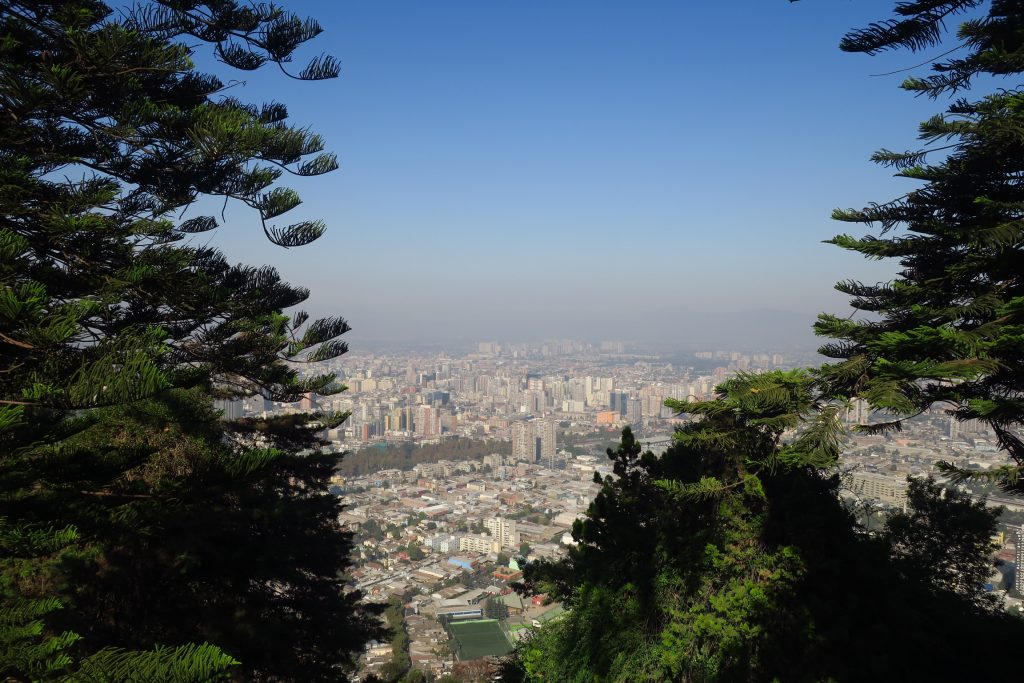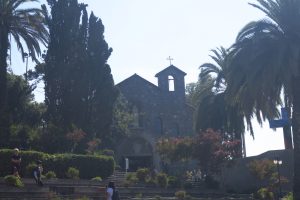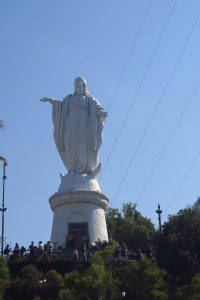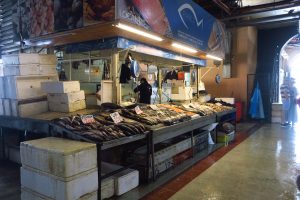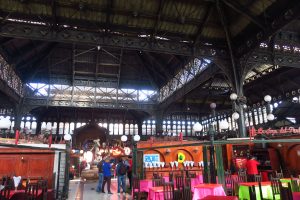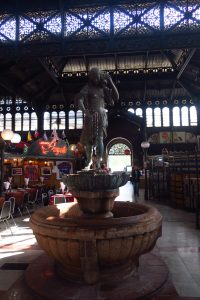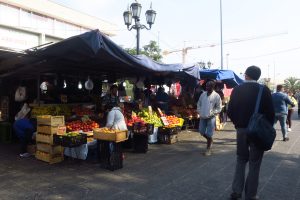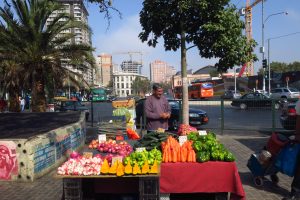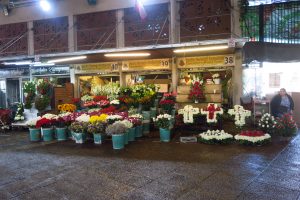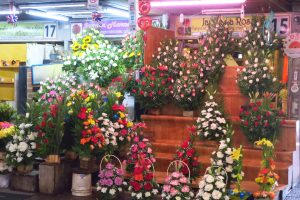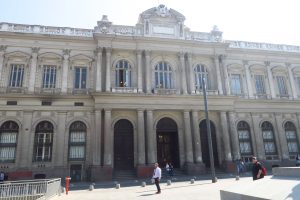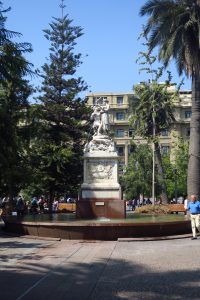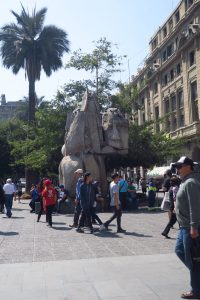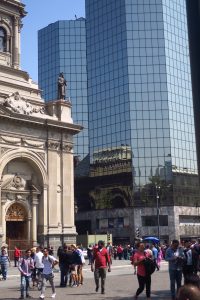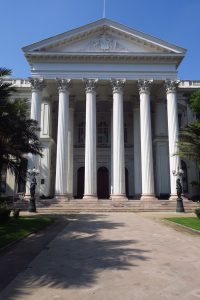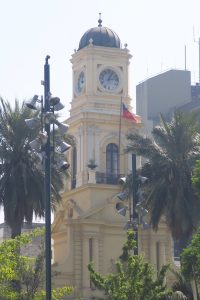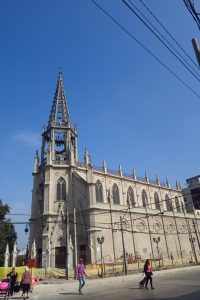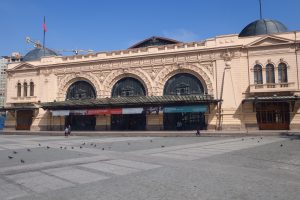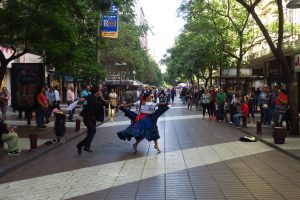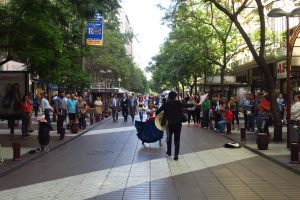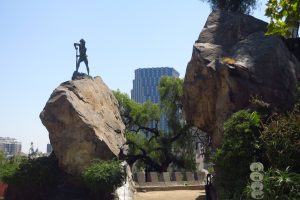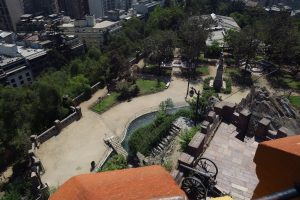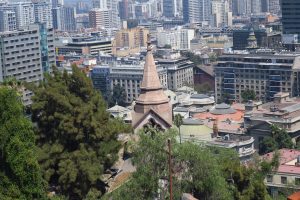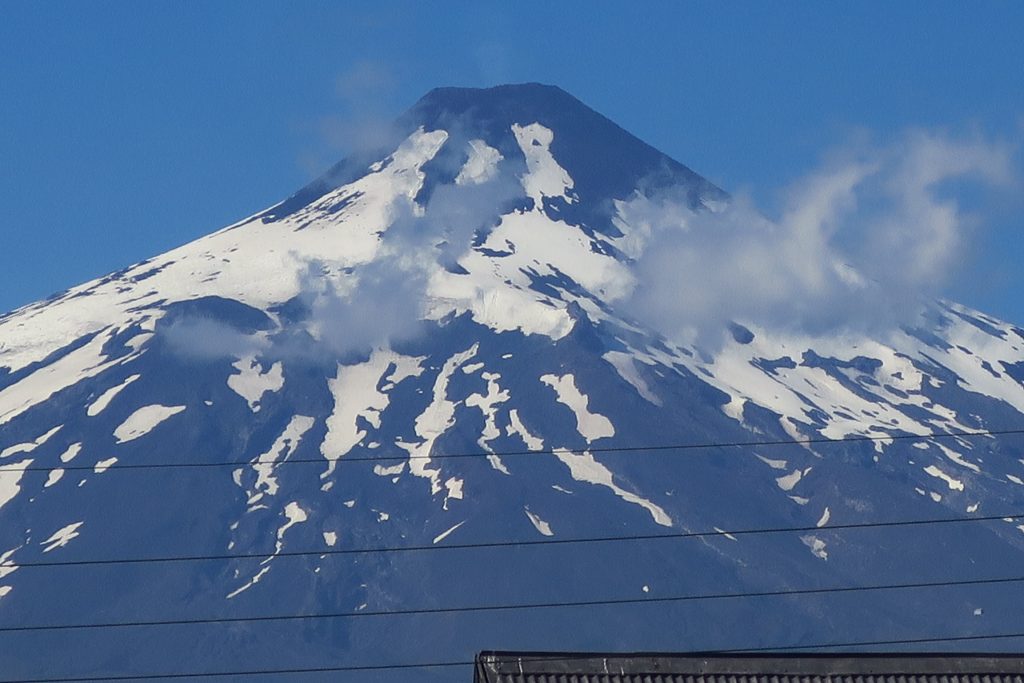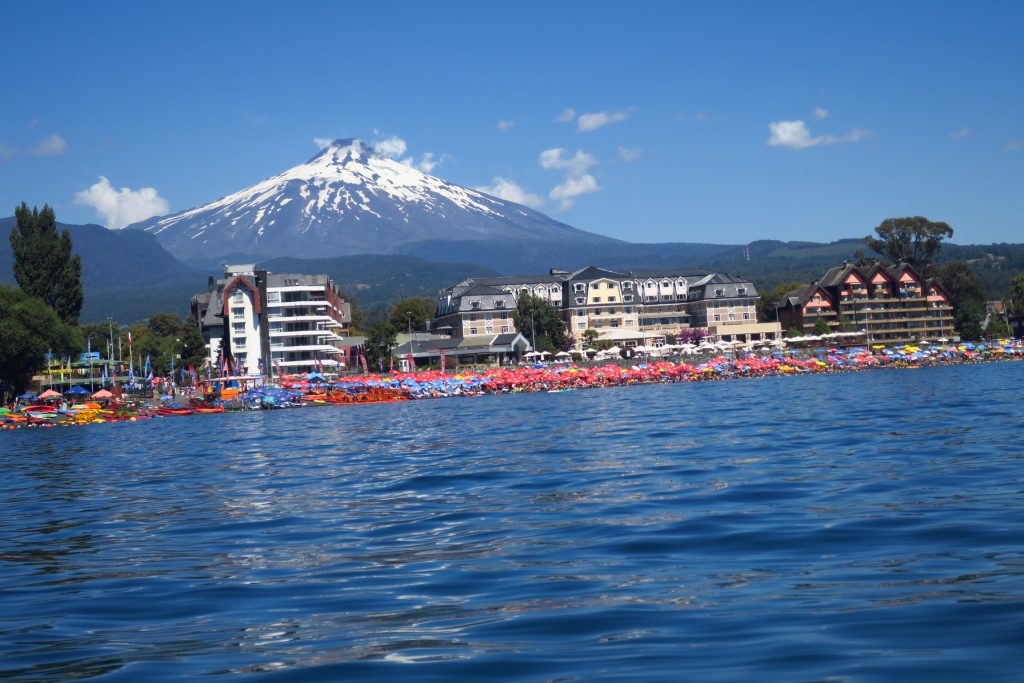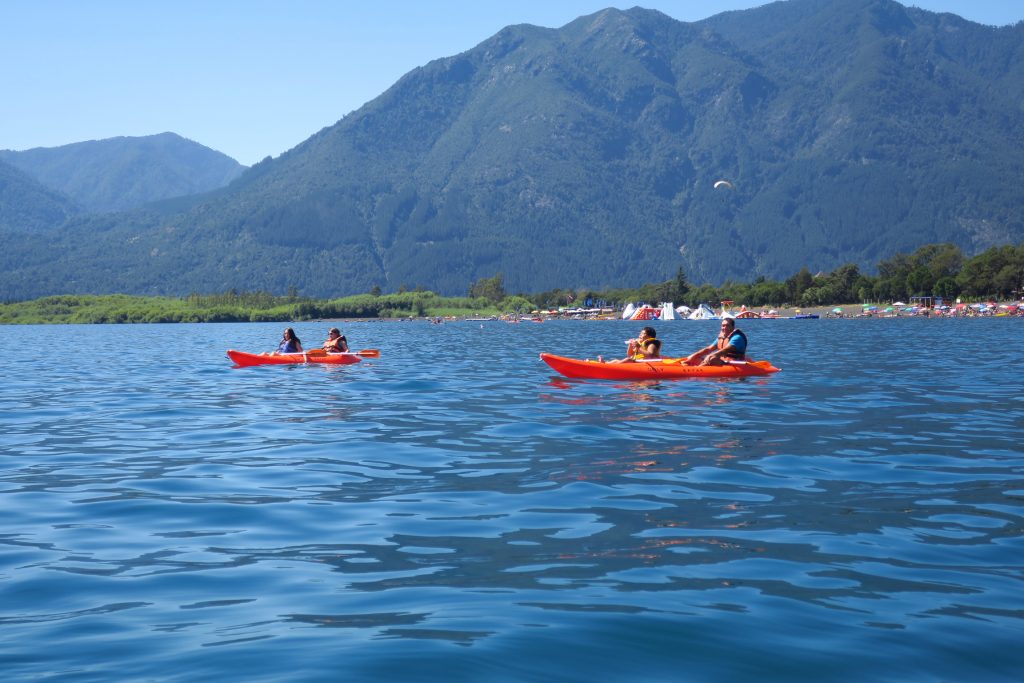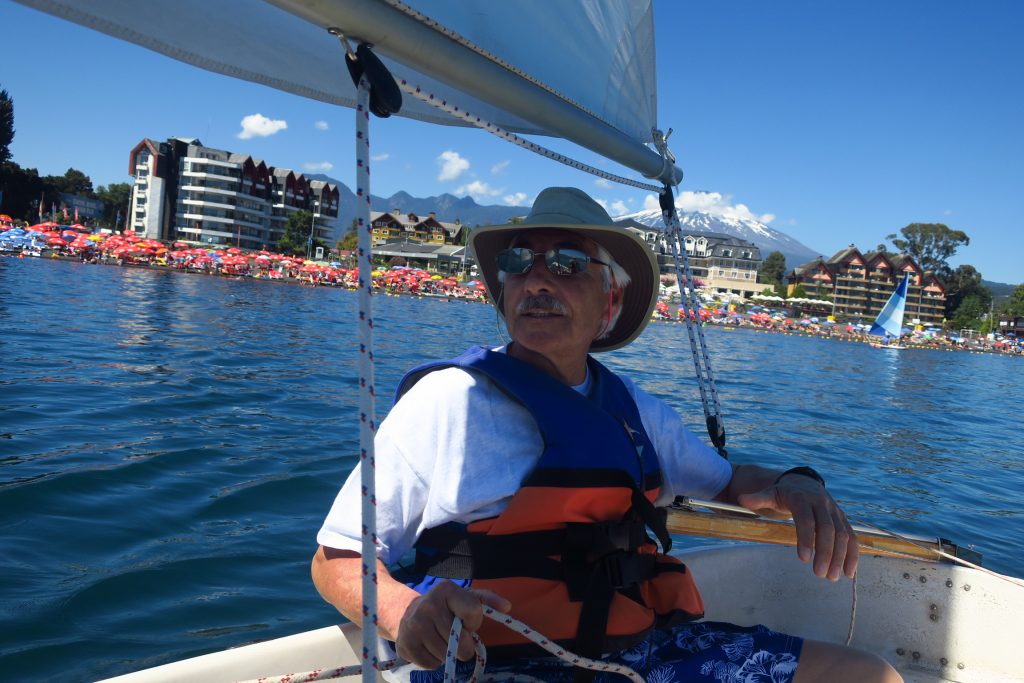This morning we met our Easter Island guide, Patricia. Her English was great since she lived in Australia for 8 years when she was growing up. On our way to our first stop we asked her about immigration to the island. She said the population had increased significantly over the last several years. It has caused issues on such a remote island. For instance, recently, they had no cooking oil for about two months. They get a supply ship every several weeks. It has to anchor out in the harbor because they don’t have a dock for it. Then the goods are transferred to a ferry which shuttles them to the island. With calm seas it typically takes about a week to unload the ship but it has taken as long as a month due to weather delays. Recently Chile enacted a law to limit the number of people immigrating to Easter Island.
Our first stop was Tahai, the location of the only moai with eyes. The eyes in the rest were damaged when they fell or damaged maliciously. This is the only one that has been fully restored.
Patricia explained that the Polynesian people most likely settled on Easter Island sometime between 700 and 1100 AD. Oral tradition states the island was first settled by a double-canoe expedition, originating from Marae Renga (or Marae Toe Hau), and led by the chief Hotu Matu’a and his captain Tu’u ko Iho. The island was first scouted after Haumaka, the chief’s priest, dreamed of such a far off country; Hotu deemed it a worthwhile place to flee from a neighboring chief, to whom he had already lost three battles. The people that came with them were organized into tribes.
The original inhabitants believed that their forefathers’ spirits had the ability to come to their aid, since the spirit remained around its relatives for a long time before leaving for good. This spiritual energy, or mana, attributed mostly to chiefs and important members of society, had the ability to influence events.
This cult of ancestors worship led to the development of a funeral ritual which consisted in wrapping the bodies in vegetable fabric and expose them to open air for decomposition. Finally, the bones were washed and deposited in a funeral chamber in the ahu, or burial mound, so that the spirit could reunite with its ancestors.
When a tribe chief or any of the important members died, a moai was ordered to be sculpted and was later transported to its village and placed on an ahu or ceremonious altar.
Once the Moai was set up in its ahu, the eye sockets were sculpted and, in a ceremonious ritual, the eyes, made from white coral and red scoria, were placed; from this moment on it was considered that the Moai’s mana could project over the tribe. Finally, an enormous red scoria cylinder called pukao was placed on top of its head. The meaning of the pukao is ambiguous, on one hand it is believed to have represented the tribe’s hierarchy and on the other to have symbolized the long hair that the islanders used to wear up in a bun.
The statues were at first sculpted out of basalt, trachyte and red scoria, but the preference soon switched to volcanic rock. At first the moais were small, with wide heads and short ears, but little by little the styling was changed to include long torsos and rectangular heads with long noses, thin lips and long ears. Also, with the passing of time the sculptures increased in size to proportions that, it is believed, would have been impossible to transport.
The population grew and grew to as high as 20,000 and the island did not have the resources to support these numbers so there was a lot of fighting and discord among the people and the tribes. Tribes started push over the moai of other tribes to eliminate the manu coming from the moai. By the 1800’s there were no moai left standing. It wasn’t until the 1960’s that a few were starting to be restored.
Here are pictures of moai that we saw that day.
We went to Anakena, the beach that the original Polynesians were believed to have landed. It was a really beautiful beach, one of only two on the island. Here are some pictures.
That afternoon we went to the quarry, a dead volcano. The master carvers sculpted the stone with basalt or obsidian chisels and it’s calculated that a team of carvers could take 2 years in finishing a big moai. First, the front side was carved with all of the details except the eye sockets. Then, the back was chiseled. They cut holes in the “keel” and inserted logs into the holes. They wet the logs, causing them to swell, which, in turn, freed the moai from the keel. Then they stood it upright with the help of ropes and place it in the previously prepared pits.
Once upright, the sculpting was completed and the Moai was ready to take one of the four “Moai paths” that would lead it to the ahu (altar) it was destined for. There are many, many moai at the quarry, some half carved and still attached to the bedrock, others in the finishing pits which have since been filled in, others which were clearly broke as they were being transported. Here are pictures.
We walked up to the volcano crater. Here are some pictures.
That evening we went out for a ride on our scooter. We stopped at a restaurant for a beer and juice. We had dinner in the room and went to bed early because we wanted to be up early to take pictures of the sunrise over the moai.


